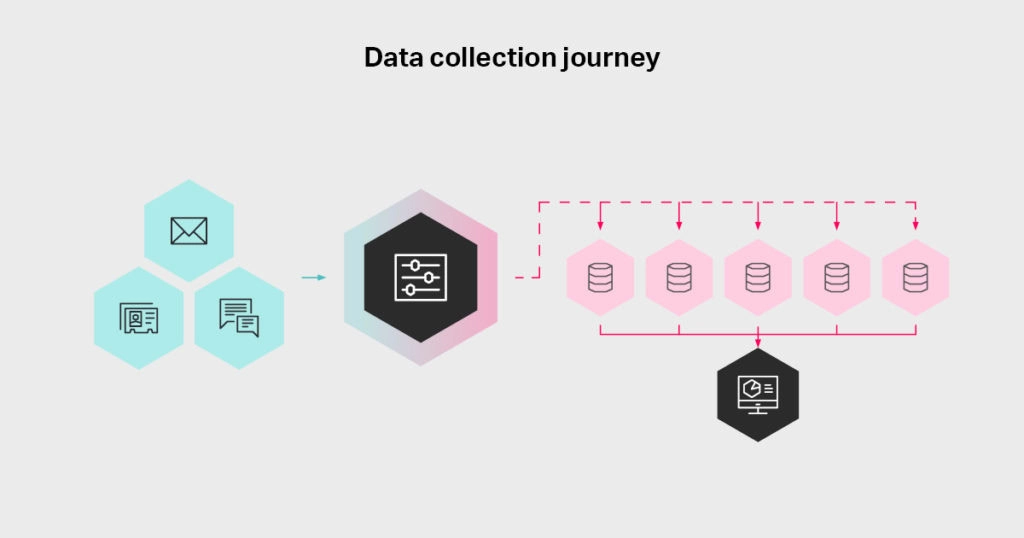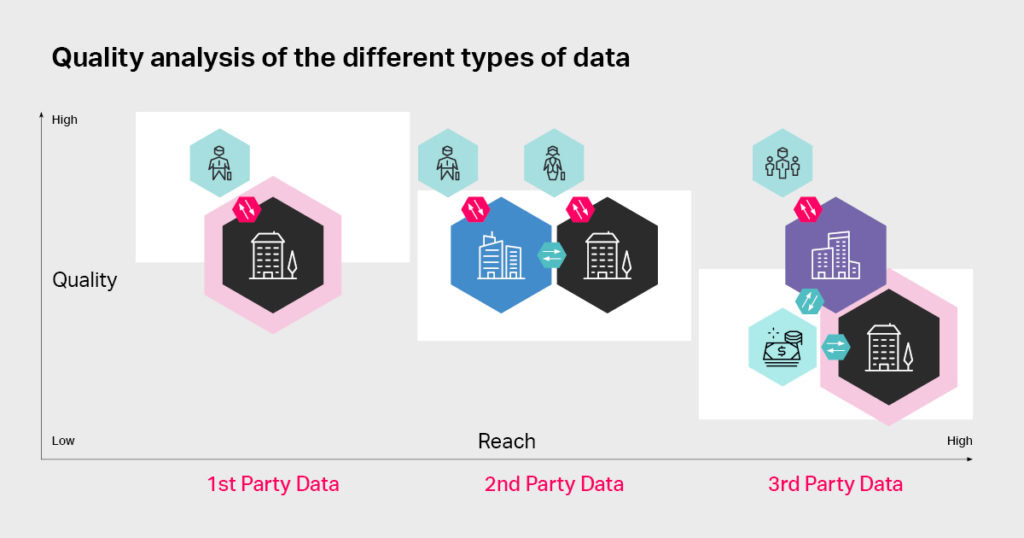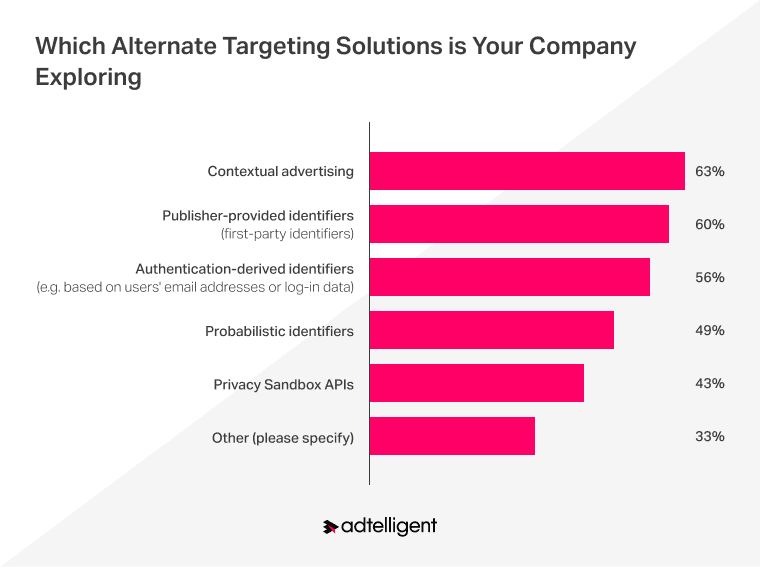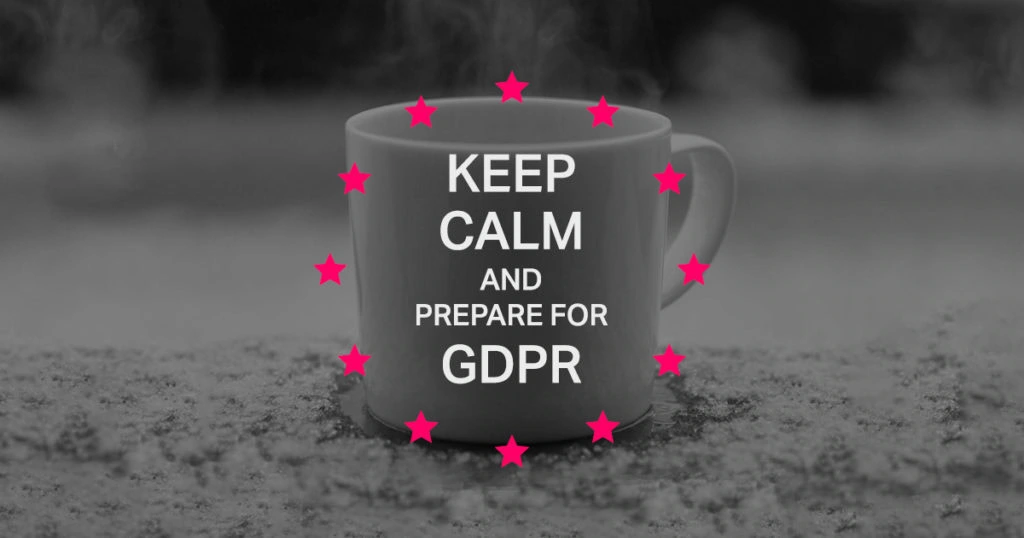Table of Contents
Data Privacy Issue
Data collected from numerous side sources had been productively used by all publishers and advertising companies until the safety of this practice was called into question.

With the rising awareness of the need for better data privacy regulations, people have become wary of their personal information being used without proper consent. And with recent digital security breaches and data misuse cases, it became clear that data privacy is a priority, and some actions must be taken.
These actions include new laws and regulations applied to the digital world, such as the ePrivacy Directive and the General Data Protection Regulation (GDPR). With new rules in motion, the deprecation of third-party cookies, data importance is obvious. The Google decisions on 3rd party cookies have been particularly hard on publishers and programmatic companies, as the whole algorithm of their business model relies heavily on third-party data processing.
According to Digiday+ research, publishers were ready to move to first-party data even before the news about saving third-party cookies in Chrome.
- In Q1 2025, 71% of publishers recognized first-party data as a key source of positive advertising results (in 2024, this was 64%).
- 85% expect the role of first-party data in monetization to increase even more in 2026, while the importance of third-party is rapidly declining.
- The amount of advertising based on first-party data is also expected to increase: 44% of publishers plan that more than 40% of impressions in 2026 will be provided through first-party data.
- Only 15% of publishers said that they effectively reach audiences across all browsers, which indicates the presence of technical challenges.
Looking for possible solutions, numerous ad companies realized the importance of first-party data and how useful the well-rounded data-gathering strategy can be. In this article, we will provide a simple guide for publishers who want to see why first-party data is more essential than ever and how it can save the ad market from a potential disaster, improve its mechanics, and even boost revenue.

What Are First-Party Data?
All the data about the audience can be divided into three types: first-party, second-party and third-party. First-party data is collected directly from the audience of the given source and is based on their behavior patterns. It is usually gathered with the help of analytics tools, CRM, personal accounts, surveys, subscriptions, and feedback.
The main difference between first-party data and third-party one is the place of information harvesting; the latter also possesses a much broader scope and generally holds bigger volumes. First-party data comes from a specific place and is considered more reliable, while third-party data arrives from various sources.

The advantages are clear: first-party data is highly relevant (since it reflects actual customer behavior) and can dramatically improve ad performance and ROI.
For example, studies show brands using first-party data see up to 8× return on ad spend and 25% lower cost per acquisition. First-party behavioral data can improve customer acquisition costs by 83% and boost ROI by 72%. Moreover, consumers overwhelmingly expect personalization: 80% say they’re more likely to buy from a company offering personalized experiences, and 90% find personalized ads appealing. In other words, direct data collection can fuel exactly the kind of one-to-one marketing users love. Crucially, first-party data also builds trust: customers know where this data comes from and how it’s used, making them more comfortable sharing information.
First-Party Data as an Alternative To Third-Party Cookies
With privacy changes in the making for a few years, the industry was hectically considering possible substitutions for third-party data. As troublesome as the situation is, the cookie crisis sparked many creative ideas and pushed the industry to seek unorthodox solutions. In the long run, it can benefit the advertising business as a whole.

Google’s changing decisions on cookie deprecation have given the industry time to adapt and test new strategies. Agencies report that clients are now less panicked and more focused on new solutions – in particular, putting first-party data “at the core” of their marketing strategy. This trend is global: brands and publishers are investing heavily in customer data platforms (CDPs) and consent management, and many new identifiers (e.g. hashed email IDs and shared ID solutions) are emerging to help. In this landscape, first-party data is not just a stopgap – it offers better accuracy, personalization, and compliance than most third-party alternatives.

In any case, a string of sundry decisions is in development considering the third-party cookies’ departure.
Some companies invest in ID Consortiums or Shared ID solutions that can help create multi-property identifiers that rely on first-party data. Examples of such Shared ID’s can be seen in the Trade Desk’s initiative, LiveRamp’s cross-device ID, Adtelligent’s Consolidated ID based on Prebid ID, Merkury non-cookie solution, and many more. Google proposes to employ cohort-based IDs or FLOCs as a potential solution, even though many players in the industry question the relatability of this method as very little information behind its logic has been made public. Some companies have already invested in contextual intelligence employing AI, machine learning, and data scientists to get valuable insights without using personal data, relying rather on the content of the page and its analysis. Considering the ongoing problem with mobile advertising abilities, there are numerous Mobile Advertising IDs (MAIDs) in development to help navigate the fast-growing mobile advertising segment. Many companies invested in creating their own data pools based on CRM data and emails, combining them with other data analyzing tools in order to get the needed audience evaluation.
The one thing remains clear through all of the recent technological developments – first-party data matters. In fact, it is so important that by implementing it and using an adequate strategy, one can arguably attain a more lucrative advertising model than the current third-party data reliant standard.

Why Is First-Party Data So Important Currently?
In a nutshell, first-party data is compliant with new privacy laws and can actually benefit brands in many ways, sometimes outperforming data from a third source.
By understanding customers directly, brands can tailor content and offers. Over 90% of consumers find relevant, personalized experiences appealing. The relationships that are built on trust and transparency attract new customers and create a good reputation for a given business. People are ready to share their info as long as they know where it goes and who uses it. And first-party data is a perfect fit for this task.
There are several other advantages that first-party data implementation can bring to the publishers:
- Better accuracy. First-party data is collected directly from customers’ behaviors and activities, which is highly reliable. Despite its scope, third-party data can provide less specific and relevant information, which can greatly hurt the advertising processes.
- Impeccable relevance. You know the source of information, so there is no need to evaluate the potential origins of the data.
- Better behavior pattern predictions. Since the information comes directly from the customers, it is easier to improve ad targeting and personalization simply due to the quality of the gathered information.
- Availability. Any web source has this type of information ready in their CRM. There is no need for a middleman, and the data is easily accessible.
- Fewer spendings. The costs associated with harvesting first-party data are minimal, and the budget for purchasing it from other parties and data aggregating companies; quality control, and verification of the purchased content are also not required in this scenario.
- Better customer experience. Thanks to the more clear data gathering policies, customers feel safer and put more trust into advertised brands.
Overall, the leverage of the first-party data creates a more transparent, well-rounded advertising ecosystem with a trusting cycle of relationships between all parties.
How to Leverage First-Party Data in Order To Benefit Your Business?
It is time to dive into details and see how to take advantage of the first-party data and where to start.
Where to collect it?
- Websites, both desktop and mobile versions. However, it is worth mentioning that mobile devices often restrict JavaScript and cookies, so the mobile web data is not as full as the desktop one.
- Apps. App users show higher engagement rates and can give valuable insights into their preferences and customer behavior.
- Subscriptions, emails, and SMS. The intel on who clicked your links, subscribed or unsubscribed, can equip you with a better understanding of your target audience.
- CRM. Researching your customer’s history can explain many patterns and help with personalization.
- Customer Support. Negative feedback is still feedback; this valuable data is often overlooked, but intel from the call centers and help desks is a powerful fuel for building better audience understanding.
- Social media and polls. Facebook, Instagram, X (former Twitter), and other social platforms are helpful sources of intel. Studying feedback online and asking customers directly can bring a lot of relevant first-hand data.
- CTV. This is a promising area for advertisers, as its reach constantly grows in recent years due to the decline of traditional television. But unlike traditional television, it is a valuable source of first-party data.
How to collect it?
First-party data is not difficult to harvest. The more challenging task is to gather it properly, with the user’s consent and compliance with new data privacy regulations.
There have been many developments in the area of consent-gathering technologies to fit the upcoming cookieless era of the ad ecosystem.
Consent Management Platforms (CMP) can help collect data ethically and fittingly to the publisher’s needs. This inventory can provide an easy interface and back-end integrations to control and implement consent settings under PECR, GDPR, and CCPA. Choosing CPM comes with its perks, especially considering scalability issues, cross-device operation, and customization abilities.
Publishers can employ Customer Relationship Management (CRM) platforms to use intel gathered from multi-channel customer interactions. Such a method can gather general contact details, purchase history and buying habits, feedback on customers’ interactions with a brand, etc. This type of data is highly relevant as it comes directly from the customers transparently, encouraging more trustworthy relationships with a brand.
CDP, or Customer Data Platform, is another tool that employs a holistic approach to first-party data gathering. It is a collective depository of user data stacked across various publishers’ sources such as CRM, websites and apps, social media, etc. All data is kept in one place and analyzed so that the individual user can be identified. CDP can help segment your audience, predict individual patterns of behavior, and personalize ad content based on the obtained information.
Data Management Platform (DMP) is a great tool to improve personalization and reach the right segments of your audience. It harvests first-party intel and categorizes it according to various patterns of downloads, buying history, preferences, demographic data, etc.
How to be better prepared?
Understandably, each publisher has a different set of demands and needs, and the strategy should be developed accordingly. Due to the sheer scope of the cookie crisis, many businesses were left in limbo to vent for themselves and decide how to proceed. Each situation is unique. However, there are a couple of steps publishers can take to prepare for the “Cookiepocalypse” and to leverage first-party data for the success of their business.
Data Privacy is a must. Many things might soon change in the advertising world; data security is not one of them. The data protection guidelines are not going anywhere and are at the forefront of all major decisions in the industry. Collecting data is essential, but so is its safety. Companies should consider effective data protection measures complementary to their business model.
Transparency and Flexibility. Make the model of intel harvesting as transparent as possible. This will likely help the business to avoid any complications with existing or future online security laws. These tactics also help to create a totally different mindset of brand-customer relationships. The more control users exert over their data usage, the more likely they are to share it.
Do your research. The crisis is ongoing and constantly evolving. In order to have the upper hand in the situation, one must be aware of all the changes and demands. Numerous solutions arise each week; industry players test and evaluate them, providing feedback and advice. It is handy to keep up with the news and regulations of the industry so you can choose the best strategy for your enterprise while also complying with the market’s regulations.
Test the solutions. Publishers should approach gathering data with the most holistic strategy, combining information from all possible directions, employing all available sources of intel, and putting the tools of their choice into practice. It is important to allow for any inventory trials and tweak the strategy to your advantage until you receive satisfying results.
Use new tools like Google Ads Data Manager. It combines all the elements of data management and optimizes work with them. Besides, Google Ads Data Manager makes it easier to manage your own data connections and use that data. It is a user-friendly platform where marketers and data analysts can collaborate. In its blog post, the company announced the new tool in Q1 2024.
Show customers the connection between the personal information they share and the value they receive for it. People are still willing to provide you with their personal information, but they must understand that they are getting something of value in return. Thus, for example, if a video game brand asks its audience about their gaming preferences, it has to show what a user gets for this.
Act comprehensively to minimize risks. Privacy and effectiveness of advertising campaigns are now very difficult to combine since they cross many traditional boundaries. A well-managed first-party data strategy is key to overcoming these challenges, but it will require early and ongoing attention both within the business and from agencies and partners.
Even though the death of third-party cookies seems like an apocalyptic event in online advertising, it has spawned a wave of new creative decisions and innovative solutions. The changes will certainly come with a string of issues and won’t be able to serve as a full replacement for the third-party data at first. Over time, however, and with the right data strategy, there is no doubt that various sectors of the advertising industry will find a solution for and strive to rely on other technology without the noticeable downsides. As for the current moment, first-party data is a big part of the holistic approach needed to ensure all ad companies can stay afloat and strive without using third-party intel.